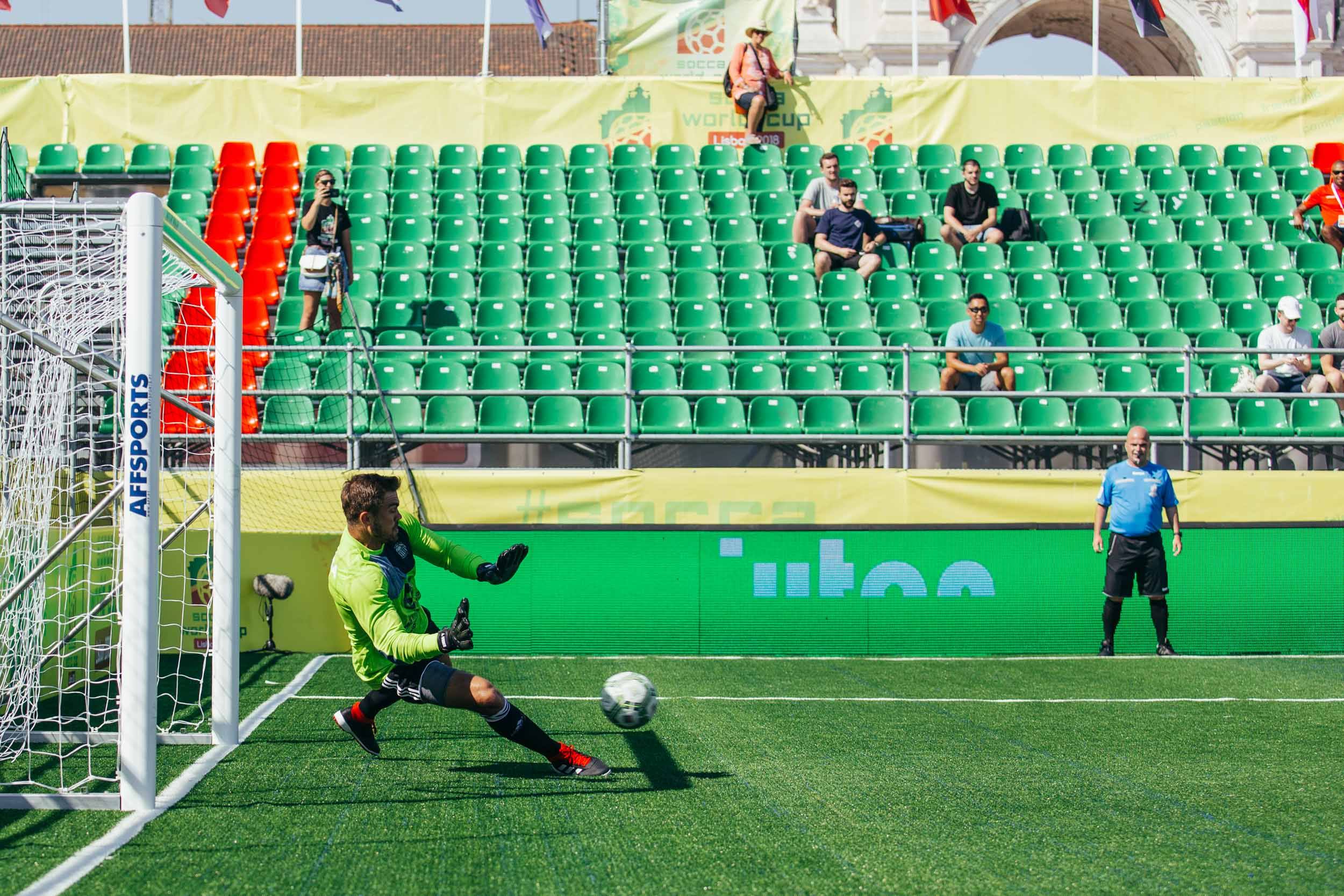
Welcome back to Rising Tactics Recap, a weekly column where I attempt to provide insight to Phoenix Rising fans by breaking down some strategic and tactical observations from Phoenix’s latest match.
The beginning of the season feels like a long time ago, doesn’t it? Phoenix Rising’s four consecutive draws and subsequent period of identity-searching seem like a distant memory. It’s not easy to turn a season around, let alone make early issues seem almost inconsequential, but that’s exactly what Phoenix’s players and coaching staff have done.
Right now, Rick Schantz’s team is playing with more confidence than I’ve seen from any previous version of Phoenix Rising. But team-wide confidence doesn’t just magically appear on the soccer field – it’s something that is built through hours of training and film sessions.
In Friday night’s 5-0 victory over the Tulsa Roughnecks, Phoenix moved the ball calmly from the back, rotated possession quickly from side-to-side, and pressed aggressively in their opponent’s half. Most impressively, they repeatedly displayed some rehearsed attacking patterns.
Schantz’s preferred 4-3-3 formation optimizes Phoenix’s spacing in possession and maximizes the players’ ability to rotate positions and move into different spaces on the field.
Soccer doesn’t have set plays like football but it does have many different possible patterns and movements that can be used to break down an opposing defense. These patterns are often set into motion by one player’s moment from one vertical channel of the field to another.
When left back Amadou Dia rotated into central midfield a month ago against Rio Grande Valley, it wasn’t a random occurrence. It was prompted by one of the other left-sided players moving out to the wing. To avoid having multiple players in one vertical channel, Dia tucked into a more central position.
Phoenix haven’t used their fullbacks as auxiliary midfield options many times since that game against RGV, but they have shown several other effective cued movements in possession. They used the following progression several times in possession in the win over Tulsa:
- An outside central midfielder drops deep into the fullback’s space.
- With his space now occupied, the fullback pushes forward and stays wide along the sideline, moving into the area that a traditional winger typically occupies in a 4-3-3.
- Because his space is now taken up by the fullback, the winger tucks inside into midfield and positions himself in a central area between the opposition’s defensive lines.
While I have those three steps listed in a numerical order, they happen almost simultaneously. Each player’s movement is cued by the other two, which results in a smooth rotation.
Here is a look at that attacking sequence in action:
Left outside central midfielder José Aguinaga drops deep, left fullback Dia pushes high and wide, and left winger Junior Flemmings moves inside. Aguinaga carries the ball forward and finds Flemmings in a pocket of space.
After Flemmings receives the ball between the lines, he turns, charges forward into the open field, and finds Solomon Asante on the right wing. Aguinaga makes a run into the box and cuts the ball back for Adam Jahn.
Tulsa’s center backs got in the way of the cutback, ending the sequence, but the point is still valid: this dangerous attacking move started with a well-drilled, well-executed attacking pattern.
Phoenix ran that pattern on both sides of the field just a few minutes later in the first half. On the left side of the field, Aguinaga drops deep, Dia pushes up (off camera), and Flemmings moves inside. Tulsa do a better job of covering the movement, so Aguinaga switches play to the other side of the field.
On the right, midfielder Jon Bakero is deep, right back Mustapha Dumbuya is high and wide, and right winger Asante is inside.
The right-sided players were unable to move the ball forward, largely because Asante impatiently dropped deep into midfield to come find the ball instead of staying between Tulsa’s defensive lines and waiting for the ball to find him. Asante’s mistake aside, the above play is another example of Phoenix Rising’s possession rotations.
Keep an eye out for how Phoenix use this rehearsed attacking pattern – and others – over the next few weeks. The players are getting more and more comfortable in Schantz’s system with each passing week. That comfort should build even more confidence to interchange, rotate, and move the ball forward into dangerous positions.
As always, to end this week’s Rising Tactics Recap, we are going to move on to The Final Third:
- It’s probably the biggest off-field storyline right now: Kevon Lambert, who started for Jamaica in their recent win over the United States, and Junior Flemmings have been called up to represent Jamaica during the Gold Cup. While their absences over the next month will force Phoenix to dig a little deeper for depth, it’s a fantastic chance for Lambert and Flemmings to gain international exposure. It’s also a great opportunity for Phoenix Rising to brand themselves as a club that draws international-quality players. It’s a win-win for all parties involved.
- Now, that’s not to say that it’s going to be easy to replace Lambert and Flemmings. Both players have been key parts of turning Phoenix Rising into one of the most dangerous teams in the USL Championship’s Western Conference. So, how will Rick Schantz replace them? When asked about losing Flemmings after Friday’s game against Tulsa, Schantz said: “Anytime you lose a player of that quality it is difficult, but we know that Joey Callistri will step out there [to the wing], Jon Bakero can move on the front line, Andrew Wheeler[-Omiunu] you saw tonight I thought was fantastic so we can slide him in the midfield.”
- FC Tucson’s Wheeler-Omiunu will likely help cover for Lambert’s absence and Bakero and Callistri will try to fill in for Flemmings on the wing. We could also see more FC Tucson players make the trip up to Phoenix to act as additional depth options. Phoenix Rising will miss two of their most talented players, but between smart transfers in the offseason and a streamlined loaning system to and from Tucson, the front office has suitably prepared for this moment.
Thanks for reading this week’s edition of Rising Tactics Recap! Check back next week for more insight and analysis.




